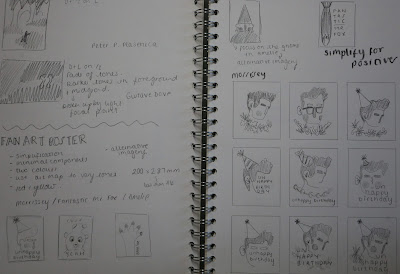PRACTICE
I've admired the work of Anna Kovecses for a while for her really sophisticated use of colour and shape, something that resonates really well with the new brief. Working with vectors, Kovecses achieves a really sleek aesthetic, attained through reduced, minimal forms.
Something I think is pivotal to Kovecses work is her consideration of symmetry and interplay. I think these considerations are possible what makes her work so effective as they maximise the use and effect of these reduced forms. Allowing shapes to overlay and interplay with one another allows abstract elements and unconventional motifs to be created, demonstrating the value of simple visual clues to control meaning.
IMAGE
This image shows consideration of repetition and symmetry, using one simple visual device to denote a person, Kovecses creates an immediate illustration promoting togetherness and community. Repetition is something I could explore in my own work to keep a consistent and simple aesthetic.
A success of kovecses work is the way she employs irregular shapes and wonky lines to echo qualities of cut paper. This not only challenges the often rigid and angular look of vector-based work, but injects a sense of crafting, contributing towards a sensitive and playful tone of voice.

















































